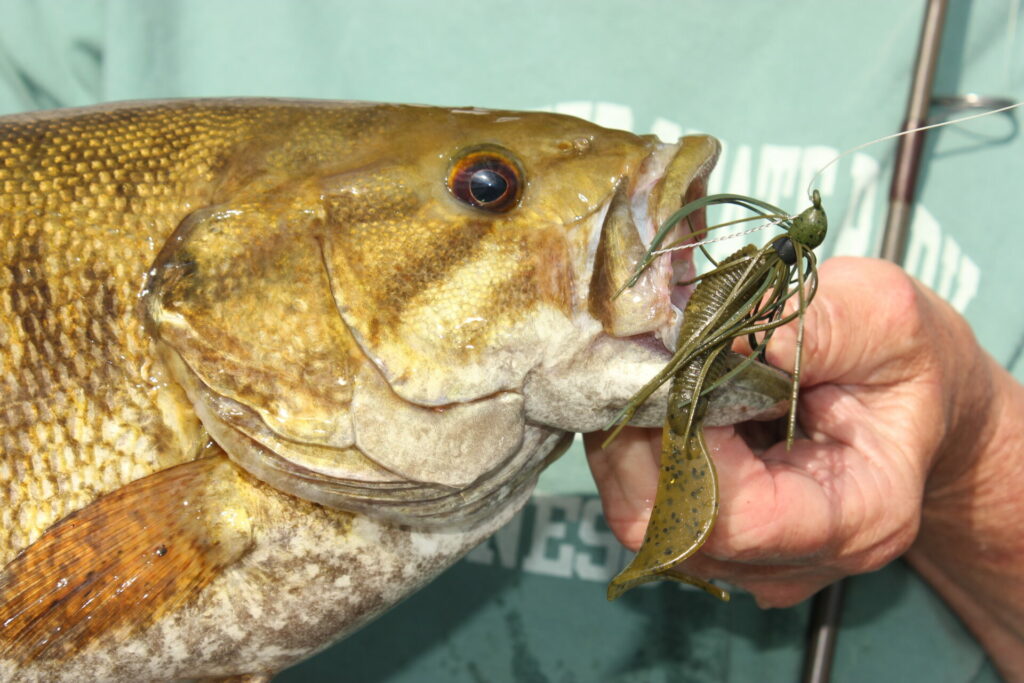The Strawman Talks Lure Colour
Lure colour isn’t always important, but when it is, it matters a lot
Advertisement
It has taken a long time, but most anglers now know that the colour of their bait or lure is well down the list of important considerations. Day in and day out, depth control, speed control and the size and profile of your bait are far more important deliberations.
But—and this is a huge but—when you iron out those first four factors, the colour of your lure can be phenomenally important. It is, perhaps, the most far-reaching tool for fine tuning your presentation. And no one grasps this principle more—”obsesses” is probably a better word—than buddy Matt Straw, one of the finest bass angers in the American mid-west, and the most outstanding steelhead angler I know.
Advertisement
Truth be told, the Strawman, who is also an In-Fisherman magazine field editor, has been driving me crazy of late with images of the huge bass he’s been catching. And when he details the lures and patterns he is using, it’s clear that colour is uppermost in his mind—even if it entails only two strands of a different-coloured silicone skirt material on his jig. And Straw says bass colour preferences change from lake to lake, so you better change too.
“As you’re fully aware, water clarity and fishing pressure have a lot to do with colour preferences among bass,” Straw says. “As zebra mussels cleared the water in the Great Lakes and pressure on bass mounted, we watched jerkbait colour preferences among smallmouth shift from bright colours like “clown” (that we used to win the 1998 Sturgeon Bay Open) to absolutely natural patterns with olive backs and pearl bellies.
“Whenever possible, my finesse skirts are based on colour preferences bass have shown in other baits over the years in each specific environment. For instance, in certain segments of the Mississippi River, bass have shown a decided preference for green-pumpkin Yamamoto grubs with green and purple micro flake. Jann’s Netcraft offers silicone skirt material in that same colour. I mix five strands of that with five strands of green pumpkin and maybe a few strands of watermelon and a couple of purple, mixing living rubber with silicone about 50-50. That skirt has been deadly for those river fish.”
Advertisement
Amazingly, in the extremely clear, highly pressured lakes that Straw fishes, he tells me that it’s virtually impossible for an angler to entice smallmouth bass to bite a lure with metal flake in it. So his finesse jig skirts are typically green pumpkin. “A strand or two of black or purple won’t spoil things,“ he says, “but if the weather is windy, cloudy and the water gets stirred up, those same skirts with copper, blue, or green micro flake tend to outperform the entirely muted colours.
Advertisement
“Maybe matching preferences for colours in other baits or “matching the hatch” with skirts just gives us more confidence in our finesse jigs. But we’ve been forced to experiment with colours as pike, snags, or low supplies of certain skirt colours narrow our options. And we each start out with a different colour than the other to narrow things down. It’s generally true that our favourite colours for a specific waterway produce best over time. Matching our success rate against everyone else fishing those waterways generally seems to anoint our skirted finesse jigs and our selected colours, too.”
Straw does note that there are times when he sees several colours being equally effective. Conversely, there are days when one of the anglers in the boat catches all the bass and the only way for the other folks to get into the game is to exactly mimic that person’s skirt colour. “Seems crazy,” he says, “especially when all the other factors—jig weight, trailer colour (we always use 5-inch, single-tail grubs) and the number of strands in the skirt—are the same. But that’s been our experience at times. We proved it to ourselves again the other day. I was catching all the bass on one colour and Mary had a similar colour but caught nothing. I gave her my jig and took hers. She caught all the bass from that point on. Not scientific, but good enough for me!”
Good enough for me, too!


